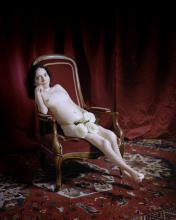Who's going to win the race?
By SunshineSeptember 14, 2014 - 14:24

In this image we can see three people, presumably men, competing in a race. They are all wearing shirts and tie, so they are not professional runners, but office workers. I’m not sure if they are compering for an interview, or a promotion, and I’m not sure if that matters. The point of the metaphor is to dat that the man in the wheelchair cannot jump over the hurdles like his colleagues can. The hurdle represents discrimination. What we don’t see in the picture is what happened before the three men reached the hurdle. First, I think it should be highlighted that the man in the wheelchair was participating in the race in the first place!



 I chose the photo that I found this summer while reading a Huffington Post article. The article was about an Italian photographer,
I chose the photo that I found this summer while reading a Huffington Post article. The article was about an Italian photographer,



